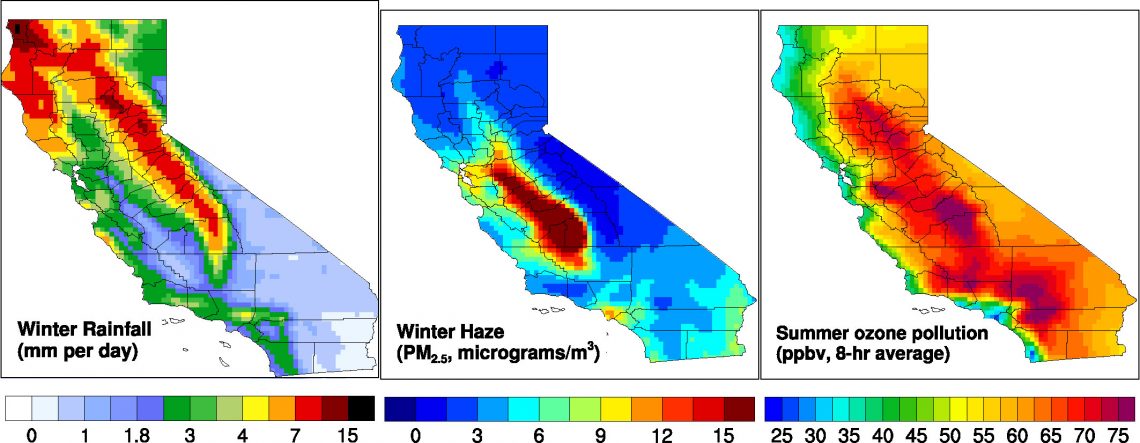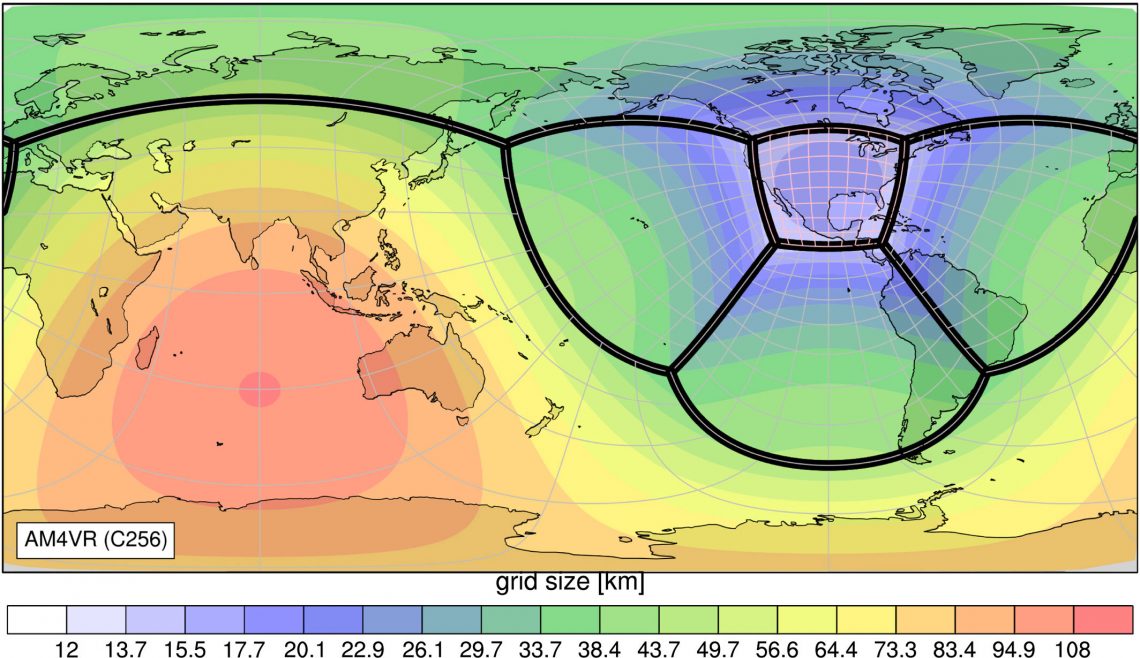May 20th, 2024
Key Findings
- Scientists at GFDL have developed a novel variable-resolution global chemistry-climate model, AM4VR, for research at the nexus of US climate and air quality extremes.
- This new model for air quality-climate interactions is a seamless system that can provide detailed information over a targeted region, while still integrating the global Earth system components in a computationally efficient manner.
- Improved processes at high spatial resolution allow the model to better represent U.S. regional rainfall extremes, drought, haze and wildfire smoke in mountain valleys, and ozone air pollution extremes.
- Notably, this model reduces the central U.S. dry-and-warm bias that has persisted in many generations of climate models.
Meiyun Lin, Larry W. Horowitz, Ming Zhao, Lucas Harris, Paul Ginoux, John Dunne,Sergey Malyshev, Elena Shevliakova, Hamza Ahsan, Steve Garner, Fabien Paulot, Arman Pouyaei, Steven J. Smith, Yuanyu Xie, Niki Zadeh, Linjiong Zhou. Journal of Advances in Modeling Earth Systems. DOI: 10.1029/2023MS003984
In the U.S., air pollution includes contributions from multiple local human and natural sources, as well as transported sources like wildfire smoke from Canada, dust plumes from Africa, and intercontinental pollution from Asia. Accurate projection of future climate and air quality at scales relevant to local and regional stakeholders requires a seamless modeling system that can provide detailed information over a targeted region, while still integrating the global Earth system components in a computationally efficient manner. Scientists at GFDL have developed a novel variable-resolution global chemistry-climate model, known as AM4VR, for research at the nexus of U.S. climate and air quality extremes.
In contrast with the global models contributing to the latest Intergovernmental Panel on Climate Change Report, this model features more than 10 times finer spatial resolution over the contiguous U.S., allowing it to better resolve cities, mountain valleys, thunderstorms, and urban-to-rural air quality variations. The model features much improved representation of regional rainfall extremes, drought, haze and wildfire smoke, and ozone air pollution extremes in diverse U.S. air basins, including California.
Notably, this model reduces the central U.S. dry-and-warm bias that has persisted in many generations of climate models. As global climate change leads to more hot and dry weather, the resulting droughts are creating dust-prone bare lands or stressing plants, making them less able to remove ozone pollution from the air. These effects are included in this model, with particular focus on integrating physical, chemical, and biological components at high spatial resolution to understand Earth system feedbacks to U.S. air quality extremes in a changing climate.
GFDL’s applications of this model enhance our ability to understand Earth system feedbacks and promote the development of improved air quality forecasting with applications to public safety, transportation, and agriculture.




